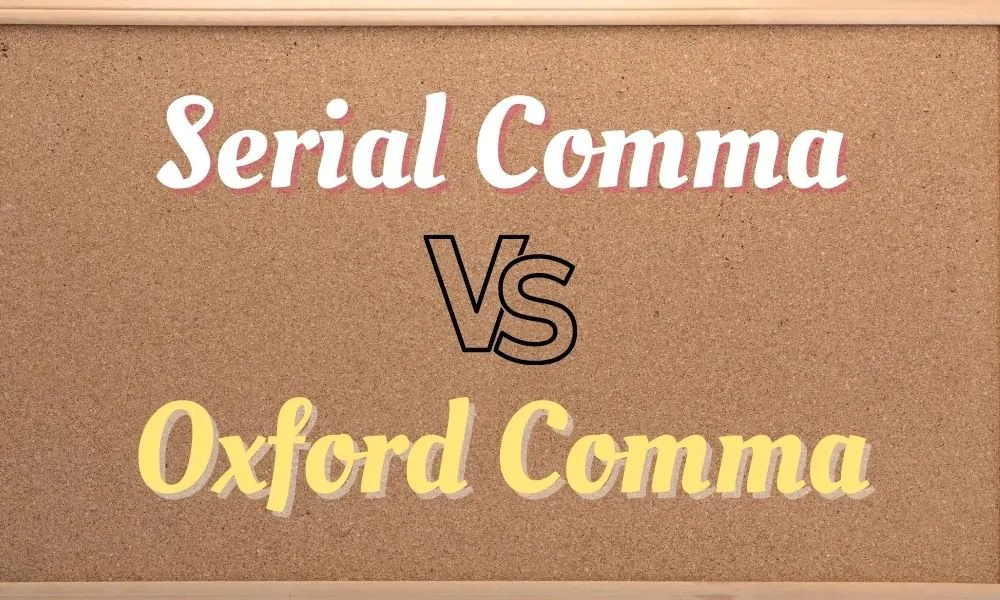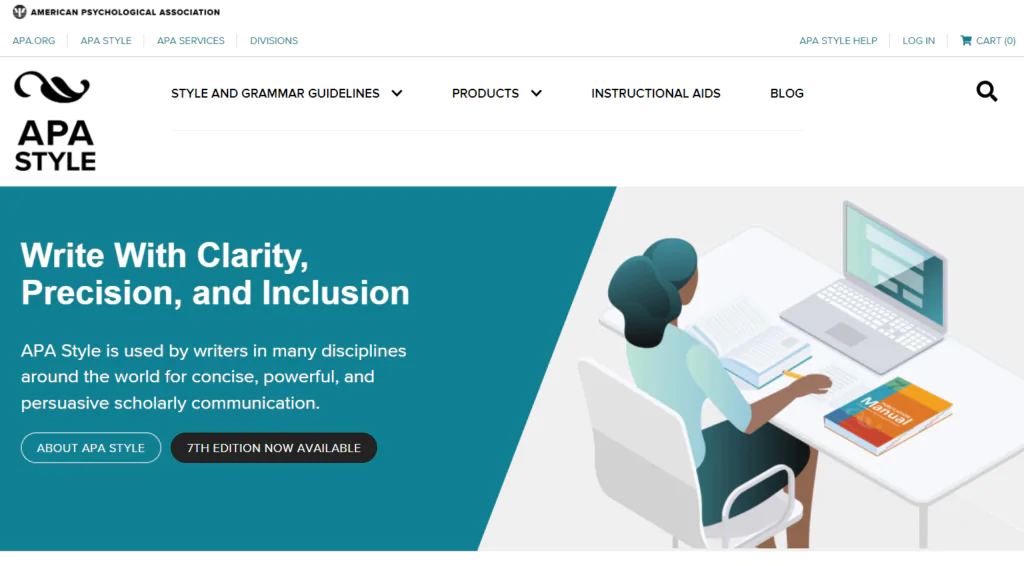Serial commas and Oxford commas are valuable tools for writing great content. Understand the difference between Serial Comma vs. Oxford Comma in this article.
Commas are a type of punctuation mark in English that denotes a pause between words in a sentence. They affect the cadence and flow of a sentence, allowing one topic to be connected to another. Below, discover the differences between types of commas, how commas impact the meaning of a sentence, and how a grammar editor can help you identify comma errors in your written content.
Contents
What Is a Serial Comma or Oxford Comma?

An Oxford comma is sometimes called a series comma, Harvard comma, or final comma in American English and is a comma placed before the last item in a list. It’s the last comma in a series of commas before the end of a list, and its use is highly contentious among writers and editorial publications. Check out our allegory vs. symbolism explainer.
Examples of a Serial/Oxford Commas
Here are some examples of what the use of the serial comma might look like in a sentence:
- “For breakfast, I’d like cereal, milk, and a glass of orange juice.”
- “My favorite authors are Ayn Rand, Stephen King, and Dean Koontz.”
- “I need to wash pants, tops, and pajamas to pack for my upcoming vacation next week.”
- “The school supplies list includes scissors, crayons, colored pencils, wide-ruled paper, and erasers.”
- “The frog croaked, jumped, and then swam to the log where he disappeared into the wet moss.”
The comma before the final item in each list mimics how these sentences might be read aloud, with a pause between the second and last item in the list.
Examples of a Regular Comma
Here are some examples of what using a regular might look like in a sentence:
- “I asked the boss for more time off, raises and overtime pay.”
- “This summer, I want to travel to Vermont, New York and Maine.”
- “Do you want to wear your red, blue or black shoes to school tomorrow?”
- “Dylan, Richard and Melvin are going to eat dinner at our favorite restaurant tonight, do you think we should go with them?”
- “Do you have any of the files from Dr. Smith, Dr. Butler or their assistants?”
As you can see, there is no comma between the second and final item in each list. Critics of the Harvard comma suggest they are unnecessary and waste valuable space. The same point can be made and understood without the extra comma and omitting it results in cleaner, easier-to-read text. Those who prefer serial commas suggest that sentences lacking a comma before the end of a list are confusing, and reading the list aloud with an appropriate cadence may be difficult.
What the Major Style Guides Say
There is no hard and fast rule on when to use a serial comma or Oxford comma and when not to. Some publications strongly advise against the Oxford comma and will decline content that contains an extra comma before the last item in a list. Other publications encourage it, and others haven’t invested either way, so long as the text is readable and otherwise grammatically correct.
Writers should check the stylebook used by their clients to determine which comma style is preferred. If there’s no indication of which comma rules the client uses, writers can generally choose whichever allows them to create the highest quality content. Here’s what the major style guides have to say about using the Oxford or serial comma.
AP Stylebook

The Associated Press Stylebook was created for printed newspaper articles and is designed to reduce the number of characters used in a written text as much as possible. The Oxford comma is not used in AP style, so writers should default to using a regular comma.
Oxford University Press
The University of Oxford Press Styleguide still uses the Oxford comma but does recommend against its general use, except for a few specific instances. For example, writers can use a serial comma in instances where the sentence’s meaning would become clearer with the comma or where a list of things is joined by the word “and.”
The New York Times
Like the Associated Press and the Oxford University Press, the New York Times does not use the Harvard comma and recommends that writers steer clear unless necessary to clarify a list of adjectives or objects.
Other Style Guides That Use the Serial Comma
Other well-known style guides that use the serial comma include the following:
- Modern Language Association (MLA)
- Chicago Manual of Style
- William Strunk Jr.’s The Elements of Style
- American Psychological Association (APA)
Why Use a Grammar Checker Tool
A grammar editor or grammar checker can help you identify comma errors that are easy to overlook, like the lack of a comma in places where one is needed, an extra comma where there shouldn’t be one, etc. While there are many grammar editors on the market, some paid and others free, most grammarians recommend the Grammarly browser extension.
Frequently Asked Questions (FAQ)
What is the comma rule?
The Perdue Online Writing Lab (OWL) at the Perdue University College of Liberal Arts publishes a list of 15 comma rules that guide the use of commas in written text. Here are just a few of them:
- Use a comma to separate individual clauses in a sentence that have been joined by conjunctions like and, or, but, yet, etc.
- Use a comma after introductory phrases except in cases where the following phrase is a dependent clause or a greater degree of contrast is needed between two clauses (e.g., “Although Mary got sunburned at the pool yesterday, she had a great time swimming with her friends.”
- Use a comma immediately before quotations (e.g., “Robert said, ‘When can we go to the store?’”)
- Use a comma when addressing someone by name. (e.g., “I don’t want to go to the store today, Janice.”)
What is an appositive?
Perdue defines an appositive as “a noun or pronoun — often with modifiers — set beside another noun or pronoun to explain or identify it.” Essentially, it calls for using commas to separate an explanatory clause nested within a sentence. Here are some examples:
- “Dr. Smith, a heart transplant specialist, will review your chart and call you back with your test results.” In this sentence, the phrase indicating the type of physician Dr. Smith is would be the appositive and Dr. Smith would be the noun or subject of the sentence.
- “Milk, which comes from cows, is nutrient-rich and an excellent source of calcium and Vitamin D.” In this sentence, the milk is the noun, and the phrase “which comes from cows” is the appositive.
When should I use a semicolon instead of a comma?
Many think a semicolon can be used in place of a comma or a period since it looks like a little bit of both. But a semicolon is a unique punctuation mark that should be used in specific circumstances instead of a period or a comma. According to Grammarly, you would use a semicolon instead of conjunction like “and” when linking two concepts or ideas together and when a comma or period would be inappropriate. Here are some examples of how to use a semicolon instead of a comma:
- “Swimming at the lake this summer should be fun; the water is always warm enough and is never too cold to get in.”
- “Everyone loves the town Christmas tree; people travel from all over the state to see it after it has been lit.”
- “The cup of water fell off the counter; because it was made of glass, it shattered everywhere on the kitchen floor.”
Final Thoughts on Serial Comma vs. Oxford Comma
A serial or Oxford comma can be a great tool for clarity and sentence structure, provided that the style guide for the content you’re writing allows the use of the Harvard comma. However, pay attention to sentence structure, meaning, flow, and whether the piece will be in print before deciding to use a serial comma.
If you still need help, our guide to grammar and punctuation explains more.